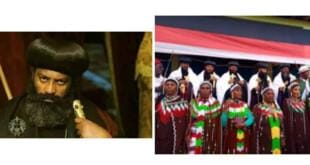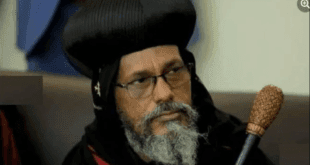June 13, 2014 (Early Warning Project) – Our statistical risk assessments continue to identify Ethiopia as one of the world’s countries at greatest risk of state-led mass killing, and recent reports of violent repression in Ethiopia’s Oromia region suggest one pathway by which that dismal but still unlikely outcome could happen.
In mid-May, Amnesty International issued a public statement calling out the use of deadly force by Ethiopian security forces against a series of nonviolent protests in Oromia that began in late April. The protesters are objecting to the part of a new development plan that envisions the expansion of the national capital region into parts of Oromia. The central government claims this change will help bring city services to remote areas, but many Oromos fear it will only lead to land grabs and evictions. According to Amnesty,
Numerous reports from witnesses, local residents and other sources indicate that the security forces have responded with excessive force against peaceful protesters. Forces comprised of the federal police and military special forces known as ‘Agazi’, have fired live ammunition at unarmed protesters in a number of locations including in Wallega and Madawalabu universities and Ambo and Guder towns, resulting in deaths in each location.
Amnesty also reported that scores of protesters have been beaten during and after protests in numerous towns in the region, and that hundreds and possibly thousands of members of the main Oromo opposition party, the Oromo Federalist Congress, have been taken to unofficial detention sites and kept there indefinitely without due process. In an official communique, the Ethiopian government acknowledged deaths in some of the towns where Amnesty reported killings but claimed it was not responsible and blamed them instead on rogue “anti-peace” forces.
This crisis is really just the latest manifestation of a deep and long-running conflict. As one Ethiopia-focused researcher sympathetic to the Oromo protesters described in a recent post on the Warscapes blog,
The brutal crackdown on the Oromo people is not new. The Ethiopian state itself has been predicated upon the expropriation of Oromo lands and held together through violent assimilationist policies, the destruction of the identity of conquered and resistant people, and economic and political exploitation of groups who are not represented in government. With each changing regime state power has been retained in the hands of minority rulers and the Oromos, who are the largest group living on the richest land, have remained the main targets of Ethiopian state repression, terrorism and discrimination. Over the last two decades alone multiple human rights organizations have released reports documenting the extent of extrajudicial killings, mass imprisonment, and torture on a massive scale, mutilations and disappearances.
Of course, most flare-ups of protest and repression like this one pass without producing episodes of mass killing in which more than 1,000 noncombatant civilians are killed. A similar eruption occurred in Oromia 10 years ago in response to another unilateral decision by the central government, that time to relocate the regional capital. Only a small number of protesters—mostly students then, too—were killed, but hundreds were detained for long periods and suspended or expelled from university. And, in a cynical sense, the repression worked; the regional capital was moved, and the wave of public protest eventually ebbed.
So far, our pool of forecasters hasn’t budged in response to these events. Since we opened a question on our opinion pool about the risk of a state-led mass killing in Ethiopia before 2015, the small number of forecasters who have weighed in on this one have pegged the risk under 10 percent, among the lowest for the (higher-risk) cases about which we ask this question, and that has barely moved in the past few months. What’s unclear is whether that’s because they expect things to follow a course similar to 2004, or because they simply aren’t aware of the recent developments.
Source: Early Warning Project





